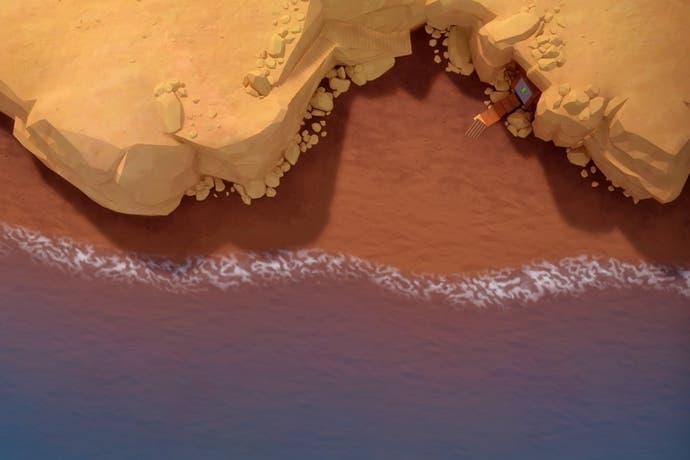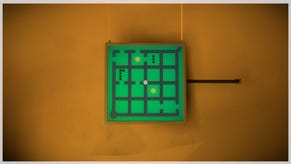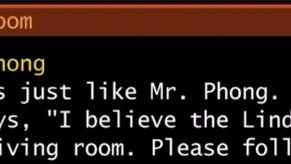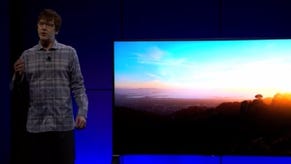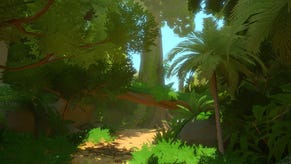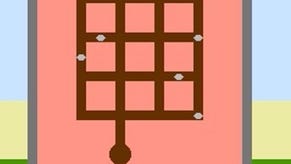The Witness review
The enigmatic puzzle epic is out now on Xbox One.
The Witness is released on Xbox One today. Here's our original review of the PC version, first published on 25th January 2016.
In The Witness, the new game by Jonathan Blow - the indie star who kickstarted an arthouse game industry with 2008's Braid - you explore a lonely and mysterious island, solving puzzles which you find installed around the place on touch panels. On each panel is a maze, which you must resolve by drawing a single, unbroken line from an entry point to an exit point. The line can never cross itself, and the route you must take is (often, but not always) dictated by rules expressed in symbols on the maze; join the dots, keep white squares separated from black, and so on. The big picture is how you use these puzzles to expand your knowledge of and access to the island, but the puzzles, which number in the hundreds, are the meat of the game.
I explained this to my colleague Chris Bratt on our podcast and he protested: "That sounds like a hacking mini-game!" And he's right, that's very much what it's like: it's a hacking mini-game that one of the world's cleverest game designers has spent seven years of his life on, and probably a considerable chunk of the personal fortune he earned from Braid. It's a hacking mini-game that constantly rewrites and reinvents itself, and also develops its own language, articulating complex ideas without ever needing a single word of explanation or instruction. It's a hacking mini-game as its own art form.
The Witness is made of puzzles, but it also is a single, grand puzzle that Blow set himself. It is the ultimate purist challenge in the art of game design: to take a simple, abstract mechanic, dominated by a single inviolable rule, and then make it sing for dozens of hours. As such, it is a great success. The Witness is a work of incredible intellectual virtuosity; it's the Goldberg Variations of puzzle games.
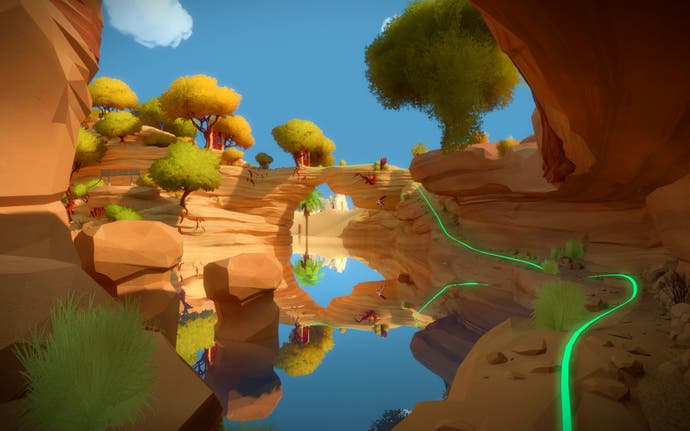
This much you might expect if you have followed Blow or played Braid, a simple puzzle-platformer which gained great layers of challenge and ingenuity from, essentially, a rewind button. What might surprise you more is the scale and opulence of The Witness. It took me 23 hours to see the end of the game, at which point I'd solved 365 puzzles, but many puzzles remain unsolved and many mysteries undiscovered. And although it has a certain cool minimalism in its presentation - there's no music, and the island is a deliberately hushed and lifeless place - The Witness is a quite gorgeous example of the 3D modeller's art, characterised by washes of rich, soothing pastel colour and a sculptural attention to detail. The island is as sunnily inviting, as reach-out-and-touch tactile, as it is eerie and remote.
To put it another way, The Witness' scope and production values are the equal of many a big-budget, big-publisher release, and its substance would shame most of them. It's a true original, but if it were comparable to any games, they would be Valve's Portal 2 and Croteam's The Talos Principle. I'm not in the habit of discussing value for money in game reviews - it's too much of an eye-of-the-beholder issue - but I hope that answers the worries of those who were surprised by its premium price point.
You might also expect The Witness to be dry, cerebral, standoffish, imposing in its challenge. So here comes another surprise. The Witness is intensely rewarding, engaging and fun. Part of this is down to that sumptuous art, the wonderful sense of place it evokes. Unreal, dreamlike, yet completely believable and solid, the island is a captivating place to spend time. But it's also because Blow has been scrupulously careful to challenge himself rather than fight the player.

I'll have to deal in generalities here, because an essential component of The Witness - a frequent joy of it, in fact - is how it reveals new rules and mechanics to you, so I don't want to spoil any individual instances of this. But in every puzzle sequence, there's a pleasurable dialogue that develops between the game and the player that starts with a question. What does this symbol mean? Or: there are no symbols here to help me, is there a clue nearby? Oh, I get it: eureka!
The rule established, its implications are worked out in what's usually a quickfire sequence of relatively simple panels, one flowing logically into the next, delivering little jolts of satisfaction before climaxing in a real poser. There are rarely more than a couple of really hard puzzles in succession, and they always lead you back to the start of the routine: a new rule, or variation, or combination to work out. The Witness can be a very challenging puzzle game - it would be disappointing if it wasn't - but it is structured with playfulness and generosity and constant pace and variety. It always seeks to bring you along with it.
You know the intense satisfaction of the 'eureka moment' you experience when solving a room in Portal, or in a Zelda dungeon? Blow is on a mission to give you that feeling dozens, maybe hundreds of times in the course of his game. People tend to use words like compelling or absorbing to describe puzzle games: playing The Witness is actually thrilling. After a good sequence you sit back as dazed and drained and gratified as from a level in Geometry Wars or a win in Dota 2.
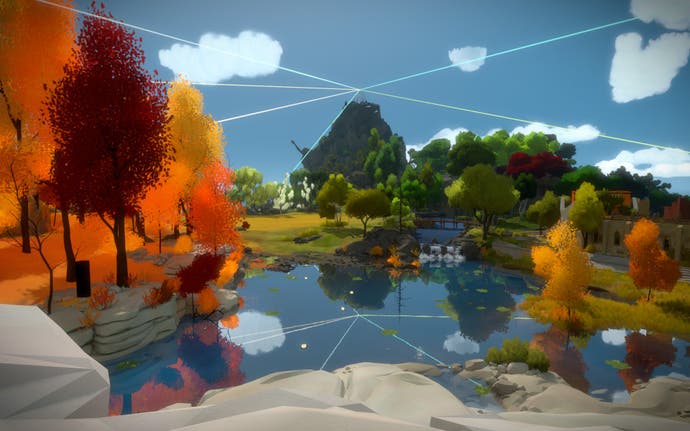
There are a few slips. Sometimes Blow's mind races ahead two or three steps at a time and leaves you bewildered in his wake; sometimes he flips a rule (or reveals its true nature) in the middle of a complex sequence, and it's asking too much. At those moments, logic looks like illogic and your mind rebels. But I think I could count the puzzles that I thought unfair on the fingers of one hand, and the puzzles that stumped me so I had to go away and do something else on the fingers of two. Out of hundreds, that's a mighty achievement.
And here's another: there's always something else for you to go and do. Though puzzles come in sequences, they are divided into themed groups which can be tackled in any order. At the end of each group, you activate a laser which lances across the island to the summit of a small mountain. You need seven of these to open up the brilliant endgame in the bowels of the rock. But there are more than seven groups; more than seven lasers. And there are yet more puzzles besides, some just for fun, some unlocking shortcuts or secrets. If you do get stuck, just go for a stroll and try something else. Chances are that when you come back with a cleared mind, the solution will come to you within minutes. (Other tips: the screenshot key is your friend; play with a pad and paper beside you; and don't just sit there staring at the board, but try drawing the line, step by logical step.)
Such is The Witness' amazing clarity as a work of game design. But - perhaps appropriately for a tribute to the classic adventure Myst, and in a way that won't surprise those who found Braid's romantic break-up subtext to be cloyingly expressed - as a work of narrative art, it is a shade too enamoured with its own pretentious mystique.

Though Blow has been at pains to point out there is no traditional storytelling in the game, there is supposedly a rationale for the island's existence, expressed in audio diaries and other ephemera. The audio recordings I've encountered have quoted poetry or religious texts. Together with some archive video clips that can be viewed in a basement cinema (one, I was delighted to find, featuring the great British broadcaster and science historian James Burke), they suggest a philosophical theme, but they're too fragmentary to make much sense of. The visual art is stronger. The island is dotted with sculptures depicting conflict, toil and the grand aspirations of man; in other places, art-installation-like arrangements suggest a metaphor for the game's own making.
I expect the 'real meaning' of The Witness is something the game's community will enjoy debating and piecing together over time, but this thread struck me as self-involved and wilfully obscure, carrying the whiff of alternate reality games: a riddle to be crowdsourced rather than a message to be understood. Personally, I don't find that interesting. At any rate, it's nothing like as interesting as The Witness' magnificent puzzles, which in their abstract way seem to have much more to say about the world: about logic, perception and the laws of physics, about light and dark, and about finding a way forward. Blow needn't have tried to make a puzzle out of art when he had already, so beautifully and so successfully, made art out of puzzles.
